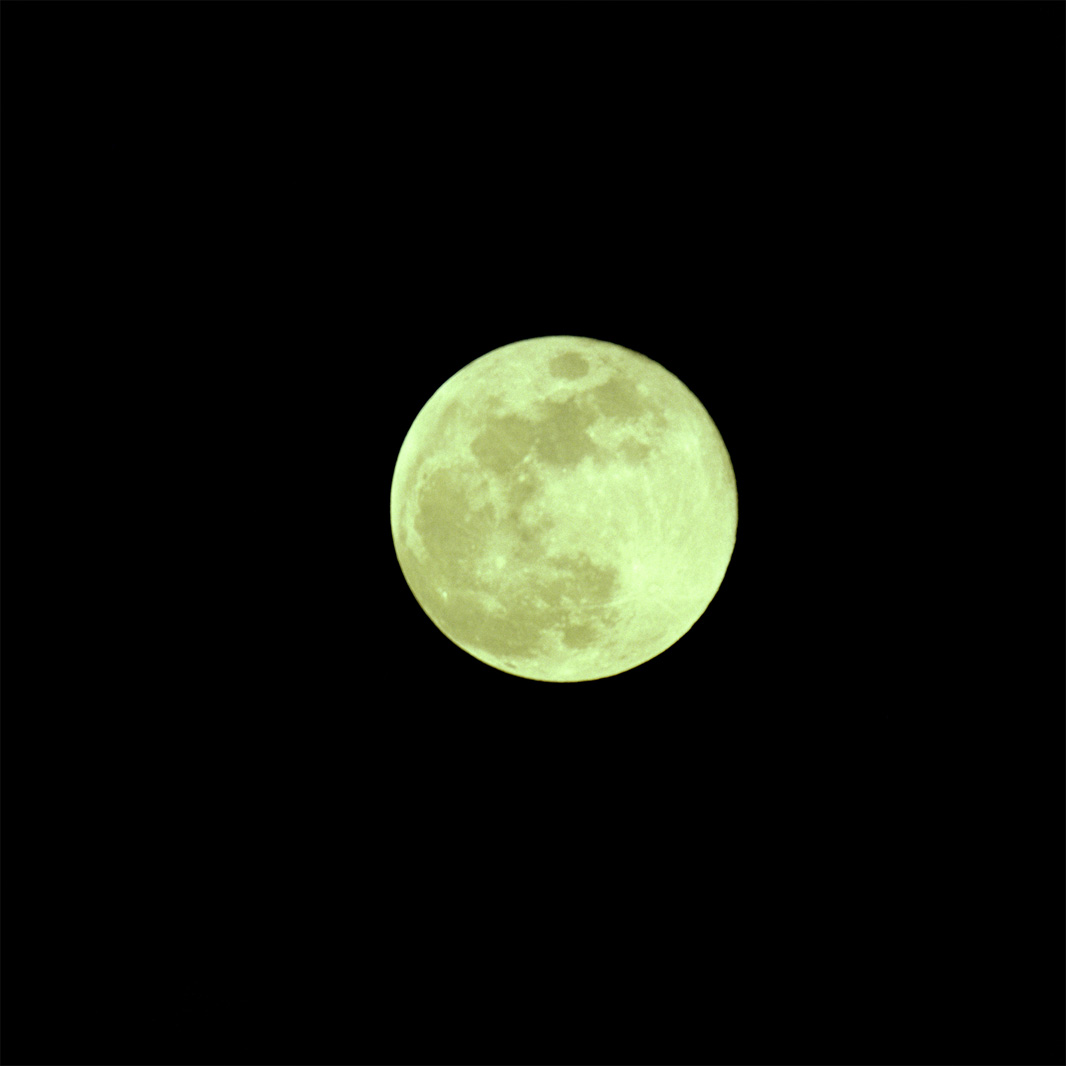by TRA
The ultimate test: Moon shots with a 2000mm lens
These tests were designed to see how my new Berlebach UNI 14 tripod, the Arca-Swiss B1-G ball head and I performed in a real-life shooting situation. They were also inspired by clear skies during the preceding nights and a full moon on the night of the test.
The sky was clear but air humidity was very high, at 80%. (The test was carried out in January.) I could feel the humidity on the camera and on the body of the lens, and see a haze or halo around the moon. When removing the camera from the lens to add a converter, I worked fast to try to minimize the forming of condensation within the camera or on the lens elements. As the equipment started off at a higher temperature than outdoors (it had been indoors), condensation may not have been a problem, but over the course of the session, the mirror lens must have got colder, and condensation may have formed on the front element. If it did, this will have reduced the contrast and the resolution of the image. I need to repeat the shots on another full moon with 35 or 40% humidity.
The camera and lens seemed rock steady on the Berlebach tripod with the B1-G head, but I used the mirror pre-release for most of the shots, to let any vibrations introduced by the mirror action die down before firing the shutter.
“Infinity” focus
For the first shots I left the focus on infinity, but then I positioned the rangefinder wedges on the edge of the moon, and saw that a tiny amount of re-focussing was necessary. Either the lens focusses “beyond” infinity (which can happen with lenses) or – of course – the moon is not actually “at infinity” (whatever that could mean!) – only 240,000 miles away! Interestingly, with the rig solidly supported I was able to relax and concentrate on the image, and I found that I could clearly see both halves of the range-finder wedges, which is unusual when working with such long lenses.
I took a meter reading off the moon’s surface for the first shot. This gave 1/8 sec at f/5.6 with 100 ASA/ISO (21DIN) film. I suspected that this was going to result in over-exposure, so took the next shot at 1/15 and tried various other exposures with subsequent shots. I used a small flashlight to illuminate the meter window so that I could see in the viewfinder or on top of the prism the Pentacon metering prism needle. This would clearly not be necessary if using the Arsenal prism with its LEDs, but the flashlight was in fact also useful for checking that I had set the shutter speed that I wanted.
2000mm
Inspired by the solidity of the setup, I tried to mount the Schneider 2× converter behind the mirror lens, and immediately discovered that the final filter at the back of the lens was so far back that it was not possible to use the Schneider converter, with its protruding front element, with this lens. I therefore used the Arsenal 2× converter.
I was surprised at how quickly the moon moved in the viewfinder. For each image I had to re-frame. I started at about 1950 hrs and was finished by 2040.
The moon was moving to the right – for which I loosened the panoramic knob – and up, for which I had to loosen the main knob. I could of course have done the reframing just by loosening the main (“multi-function”) knob, but I found it easier just to adjust the vertical angle of the lens when the ball head was loosened. I soon discovered the purpose behind the friction control thumb screw on the Arca-Swiss ball head. Putting this to the right setting would enable me to slacken off the main knob until it stopped, knowing that at that point I could change the angle without any danger of the lens flopping over. As I hadn’t done that, I just carefully supported the lens as I slackened off the multi-function knob, until I found that I could move the camera-lens assembly.
I had never seen the surface of the moon so clearly, except in other people’s photographs, and spent quite some time just looking at it, amazed at the details that I could see.

The moon through a 2000mm lens.
C441-19
Fuji Superia 100
This shows the whole of the frame, so that you will know what to expect with 2000mm on the Pentacon Six. In fact, the image would be better cropped to close round the moon. The great thing about using Medium Format is that cropping is not a problem – you still end up with a high-resolution image!
At high magnification it is clear that this image is not as sharp as I would have wished. The shutter speed was a mere 1/60 sec(!), and this was the last frame on the film, for which I did not use the mirror pre-release. It is clear that at this degree of magnification and with such extraordinarily slow shutter speeds, using the mirror pre-release is virtually essential. (Find details of it here.) The extremely high humidity must also have reduced the sharpness of the image – the haze effect could in fact be seen with the naked eye!
Any vignetting that may have been introduced by the converter
is naturally not visible in this shot.